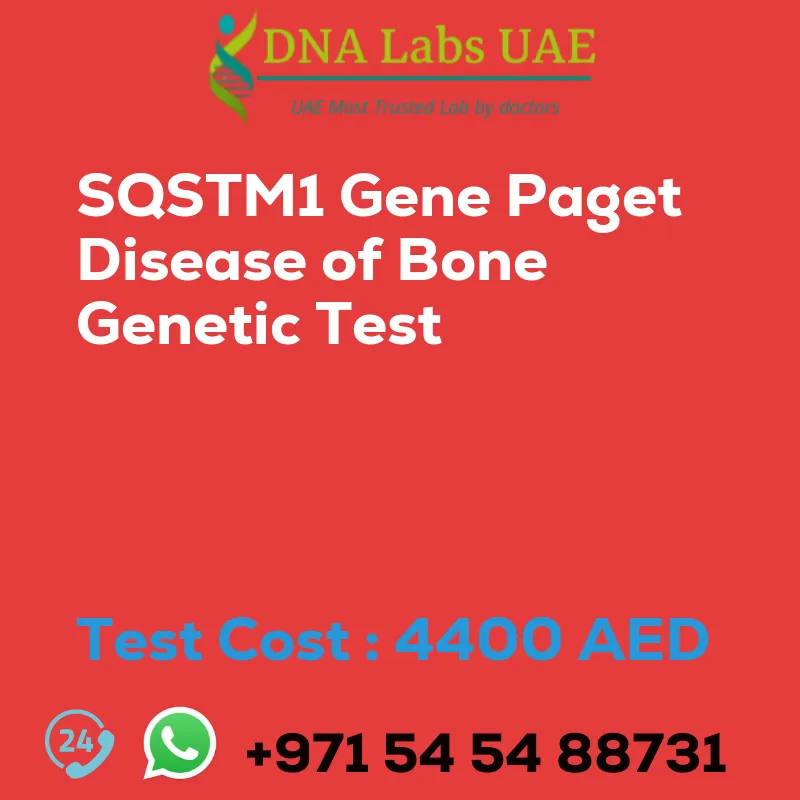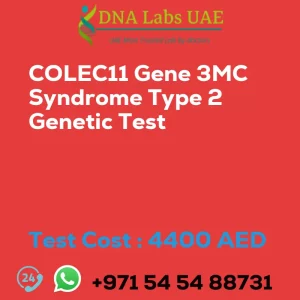SQSTM1 Gene Paget disease of bone Genetic Test
Components
Price: 4400.0 AED
Sample Condition: Blood or Extracted DNA or One drop Blood on FTA Card
Report Delivery: 3 to 4 Weeks
Method: NGS Technology
Test type: Osteology Dermatology Immunology Disorders
Doctor: Dermatologist
Test Department: Genetics
Pre Test Information
Clinical History of Patient who is going for SQSTM1 Gene Paget disease of bone NGS Genetic DNA Test. A Genetic Counselling session to draw a pedigree chart of family members affected with SQSTM1 Gene Paget disease of bone NGS Genetic DNA Test gene SQSTM1
Test Details
The SQSTM1 gene is associated with Paget’s disease of bone, a condition characterized by abnormal bone remodeling. NGS (Next-Generation Sequencing) genetic testing is a method used to analyze the DNA sequence of a person’s genes to identify any mutations or variations that may be associated with a particular disease or condition. In the case of Paget’s disease, NGS genetic testing can help identify any mutations in the SQSTM1 gene that may be contributing to the development of the disease. This information can be used for diagnostic purposes, to predict disease progression, and to guide treatment decisions.
| Test Name | SQSTM1 Gene Paget disease of bone Genetic Test |
|---|---|
| Components | |
| Price | 4400.0 AED |
| Sample Condition | Blood or Extracted DNA or One drop Blood on FTA Card |
| Report Delivery | 3 to 4 Weeks |
| Method | NGS Technology |
| Test type | Osteology Dermatology Immunology Disorders |
| Doctor | Dermatologist |
| Test Department: | Genetics |
| Pre Test Information | Clinical History of Patient who is going for SQSTM1 Gene Paget disease of bone NGS Genetic DNA Test. A Genetic Counselling session to draw a pedigree chart of family members affected with SQSTM1 Gene Paget disease of bone NGS Genetic DNA Test gene SQSTM1 |
| Test Details |
The SQSTM1 gene is associated with Paget’s disease of bone, a condition characterized by abnormal bone remodeling. NGS (Next-Generation Sequencing) genetic testing is a method used to analyze the DNA sequence of a person’s genes to identify any mutations or variations that may be associated with a particular disease or condition. In the case of Paget’s disease, NGS genetic testing can help identify any mutations in the SQSTM1 gene that may be contributing to the development of the disease. This information can be used for diagnostic purposes, to predict disease progression, and to guide treatment decisions. |








